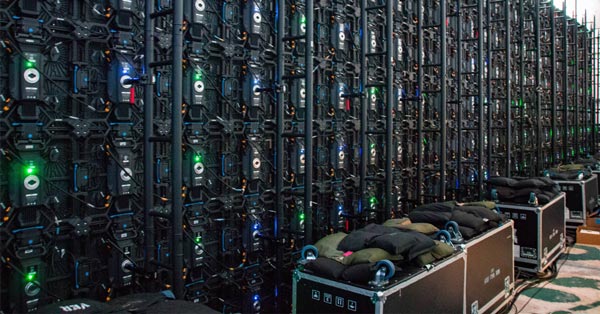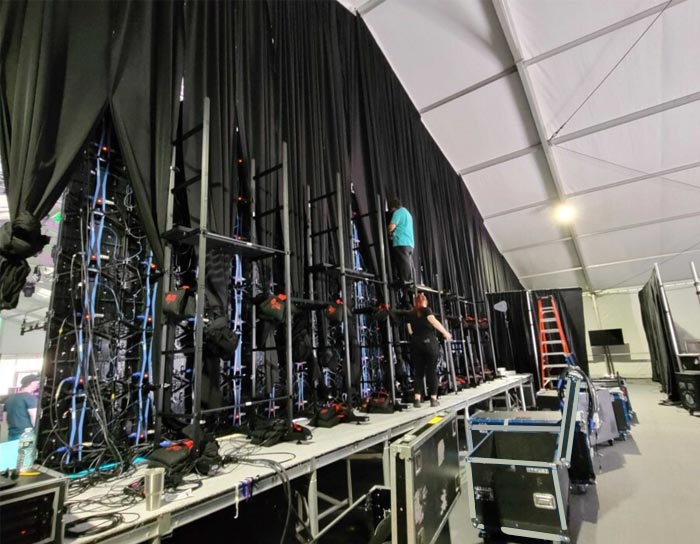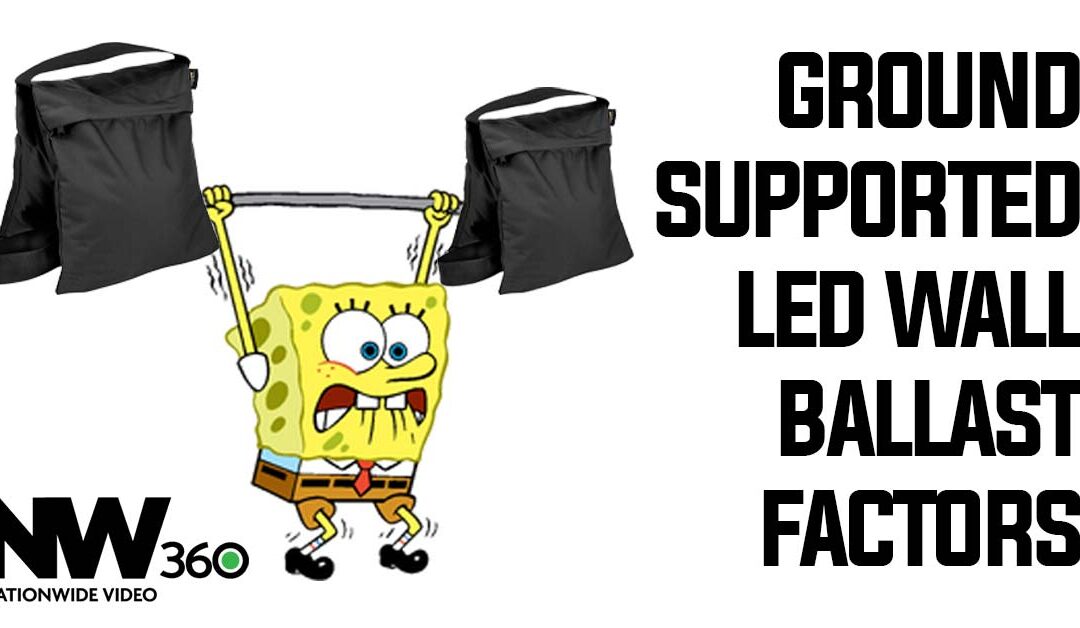Ground Supported LED Wall Ballast Factors
When it comes to building a ground supported LED wall one of the most important thoughts is safety planning. One crucial aspect to consider is the amount of ballast required. The right amount of ballast ensures the stability and safety of the structure which is the most important part of any live event. While this article won’t give an exact formula for calculating ballast requirement, here are some fundamental factors to consider when determining the optimal ballast for your ground supported wall.
Factors That Impact Ballast Requirements
Indoor vs. Outdoor Placement
Whether your ground supported wall is located indoors or outdoors plays a significant role in determining the necessary amount of ballast. Wind, a key factor in this equation, can have a substantial impact. Generally, ground supported walls tend to lean forward, since the weight of the LED is front loaded. Outdoors, the force of wind against them can increase this impact. Consequently, the more wind the wall is exposed to, the greater the amount of ballast required to counterbalance the force and maintain stability.
Flooring Condition
The condition of the flooring upon which your ground supported wall rests is crucial. A solid, level floor is not just beneficial but absolutely necessary for ensuring the stability and durability of the wall. If the floor is uneven or tilting, it can pose challenges during construction and throughout the life of the wall. An uneven floor can complicate the assembly process and potentially hinder the effectiveness of the ballast. Additionally, a tilting floor introduces the risk of the wall tipping over, further emphasizing the importance of a solid foundation and effective ballast.
Placement of Ballast
The positioning of the ballast in relation to the wall is another pivotal consideration. The further back the ballast is placed from the front of the wall, the less ballast you may need. This configuration relies on the principle of leverage, utilizing the weight of the ballast to counteract the forward inclination of the wall. Finding the right balance between ballast placement and weight is essential for achieving the desired stability without unnecessary excess.


Example of roadcases and sandbags being used as LED ballast. Source: Imgur user
Integration with Existing Structures
Before finalizing your ballast requirement, assess the possibility of securing the ground supported wall to an existing structure. If possible, integrating the wall with an already established structure can have a positive impact on its stability. By sharing the load and support, you might be able to minimize the ballast requirement. If you’re installing a permanent wall, collaboration with structural engineers and architects can help determine the best approach for connecting your wall to the existing structure.
Wall Shape
The shape of the wall also influences the necessary amount of ballast. A flat, straight wall will typically require more ballast compared to a curved or cornered wall. The curvature would increase the stability and require more external force to tip it over. It therefore reduces the natural tendency to lean forward without any external factors. While this might not always be a design consideration, it’s worth noting that wall shape can impact the overall stability equation. Imagine if you will standing a piece of paper up while its flat. The paper is flimsy and falls, but when you bend the paper or create a fold, the paper can stand.
So what can I use for ballast?
Nationwide Video LED Strategist, Brett Thierbach, has spent years touring with massive touring acts so we got his words of advice regarding ballast: “There’s no such thing as bad ballast. The only bad ballast is not enough ballast. We used everything from feeder cable, equipment cases, steel plates, sand bags, water ballast, and concrete bricks. Believe it or not, we’ve even had shows where we use very heavy security personnel. Being innovative and crafty on show site is a huge part of our industry so when it comes to ballast for your ground supported LED wall, anything works as long as it’s heavy!”


Example of an LED wall and ballast set up correctly. Source: Quince Imaging
Constructing a ground supported wall requires a thoughtful approach to ensure its stability, safety, and longevity. Whether you’re dealing with wind exposure, flooring conditions, ballast placement, integration with existing structures, or wall shape, each factor plays a crucial role in achieving a successful outcome. The team at Nationwide Video is standing by to help you with your next LED wall. From start to finish, we’re happy to support you in determining what is required for a successful LED wall for your next event. Reach out to us at 800.935.2323 or info@subrent.com to get started on your LED wall.

